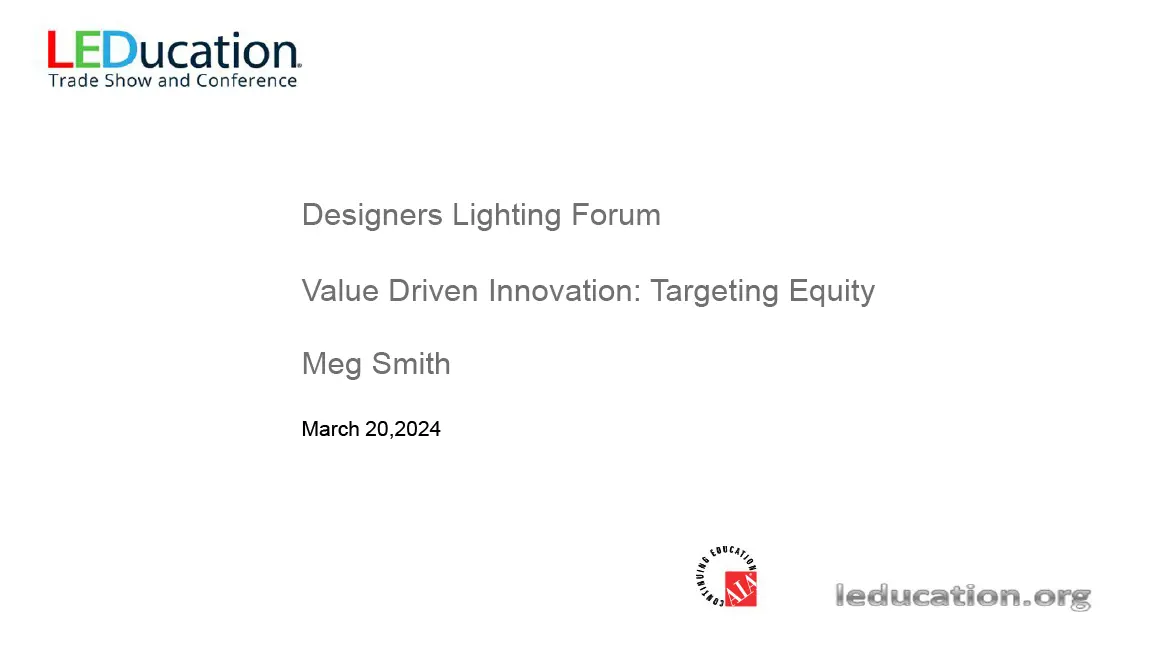Meg Smith, lwlumens
Location: Gramercy
WednesdayMarch 20, 2024
10:30 am - 11:30 am EST
Credits 1 LU | HSW
Introductory
Most people can effectively process and respond to the sensory stimuli of daily life. Those who have sensory processing disorders struggle to form meaningful responses to sensory stimuli resulting in under-responsiveness, over-responsiveness or variously both types of responsiveness to environmental stimuli. Visual hypo- or hypersensitivity may be caused by neurological diversity, Vitamin D deficiency, migraines, functional visual limitations, side effects of medications, or brain injury. Recent research documenting the combined incidence of these causes and failure to deliver appropriate public health care in underserved communities highlights the urgency of responding to sensory sensitivities with appropriate stimulus and level of control.
Basic understanding of lighting application requirements including illuminance and color appearance (CCT), comfort concerns such as glare, flicker, and energy constraints such as lumens/watt is recommended for this presentation.
Learning Objectives
- Attendees will be able to describe challenges visually hyposensitive individuals may experience performing workplace tasks and recommend strategies adopted during project design phase.
- Attendees will be able to describe challenges or concerns visually hypersensitive individuals may experience performing workplace tasks and successfully recommend strategies adopted during project design phase.
- Attendees will be able to describe the variety of causes of sensory stimulus disorders to assist project teams to understand, properly and prioritize, design choices.
- Attendees will be able to cite research documenting the failure of public health care in underserved communities resulting in increased increased incidence of the causes of sensory sensitivities.

Speaker

Meg Smith has extensive experience working with lighting professionals, research organizations and utilities in the sustainable and intelligent lighting design marketplace. In her current role as an independent consultant, Meg identifies application and innovation opportunities, working collaboratively with researchers and business leaders, synthesizing technical and market insights to drive innovation towards user-centric, differentiated solutions. Meg is NCQLP Lighting Certified (LC) and an active member of the IESNA. She currently serves on the and the IES Sustainability committee and served on the IES Light and Human Health Committee. Additionally, Meg is both a LEED and WELL accredited professional.
